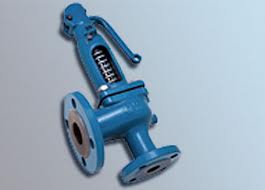ATEX Explosion Relief Valves
As of July 2003, organizations in EU must follow the directives to protect employees from explosion risk in areas with an explosive atmosphere. There are two ATEX directives :
- the ATEX 95 equipment directive 94/9/EC, Equipment and protective systems intended for use in potentially explosive atmospheres;
- the ATEX 137 workplace directive 99/92/EC, Minimum requirements for improving the safety and health protection of workers potentially at risk from explosive atmospheres.
Employers must classify areas where hazardous explosive atmospheres may occur into zones. The classification given to a particular zone, and its size and location, depends on the likelihood of an explosive atmosphere occurring and its persistence if it does. Areas classified into zones(0, 1, 2 for gas-vapor-mist and 20, 21, 22 for dust) must be protected from effective sources of ignition.Equipment and protective systems intended to be used in zoned areas must meet the requirements of the directive. Zone 0 and 20 require Category 1 marked equipment, zone 1 and 21 require Category 2 marked equipment and zone 2 and 22 require Category 3 marked equipment. Zone 0 and 20 are the zones with the highest risk of an explosive atmosphere being present.
Equipment in use before July 2003 is allowed to be used indefinitely provided a risk assessment shows it is safe to do so. The aim of directive 94/9/EC is to allow the free trade of ‘ATEX’ equipment and protective systems within the EU by removing the need for separate testing and documentation for each member state.
The regulations apply to all equipment intended for use in explosive atmospheres, whether electrical or mechanical, including protective systems. There are two categories of equipment I for mining and II for surface industries. Manufacturers who apply its provisions and affix the CE marking and the Ex marking are able to sell their equipment anywhere within the European union without any further requirements with respect to the risks covered being applied. The directive covers a large range of equipment, potentially including equipment used on fixed offshore platforms, in petrochemical plants, mines, flour mills and other areas where a potentially explosive atmosphere may be present.
In very broad terms, there are three preconditions for the directive to apply: the equipment a) must have its own effective source of ignition; b) be intended for use in a potentially explosive atmosphere (air mixtures); and c) be under normal atmospheric conditions.
The directive also covers components essential for the safe use and safety devices directly contributing to the safe use of the equipment in scope. These latter devices may be outside the potentially explosive environment. Manufacturers/suppliers (or importers, if the manufacturers are outside the EU) must ensure that their products meet essential health and safety requirements and undergo appropriate conformity procedures. This usually involves testing and certification by a ‘third-party’ certification body (known as a Notified Body e.g. Sira, Intertek, Baseefa, Lloyd's, TUV) but manufacturers/suppliers can ‘self-certify’ Category 3 equipment (technical dossier including drawings, hazard analysis and users manual in the local language) and Category 2 non-electrical equipment but for Category 2 the technical dossier must be lodged with a notified body. Once certified, the equipment is marked by the ‘CE’ (meaning it complies with ATEX and all other relevant directives) and ‘Ex’ symbol to identify it as approved under the ATEX directive. The technical dossier must be kept for a period of 10 years. Certification ensures that the equipment or protective system is fit for its intended purpose and that adequate information is supplied with it to ensure that it can be used safely. There are four ATEX classification to ensure that a specific piece of equipment or protective system is appropriate and can be safely used in a particular application: 1. Industrial or Mining Application; 2. Equipment Category; 3. Atmosphere; and 4. Temperature.
